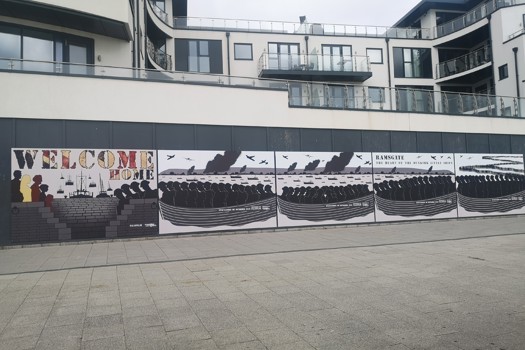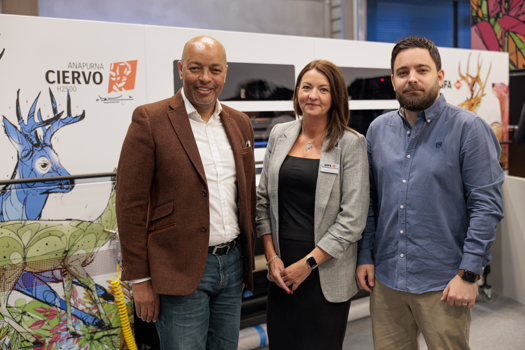Autobond Mini 74

Autobond has proved its manufacturing longevity with models such as the popular Mini 74 laminator for the B2 market, explains Nosmot Gbadamosi
Derbyshire-based Autobond has been manufacturing laminators and consumables since the company opened its doors in 1978. Aptly located just outside Derby among a host of other British engineering expertise, including Rolls Royce, the family-owned business now has a subsidiary company in the US.
At the time of its launch, printers were paying a fortune to have jobs laminated, often waiting up to two weeks for work to be finished. The company set about changing this by manufacturing affordable laminators for commercial printers. It identified a need for in-house, cost-effective laminating and set about building its first laminator, the MF1, an SRA2 water-based machine.
According to managing director John Gilmore, 94% of the company’s machines built over the past 20 years are still working today and the manufacturer continues to innovate. For example, it put its expertise into the development of the Mini 74, which was introduced at Drupa 2004. The laminator replaced Autobond’s Compact 74, which at 15,000sph was too high spec for a market suffering from decreasing run lengths. "Customers no longer needed a high-end machine so we brought out the Mini 74 with a speed of 7,500sph B2," says Gilmore.
The ‘TH’ identifies the Autobond Mini 74 TH as a thermal machine with a Heidelberg feeder. The TPHS model is one with a stacker and perfector.
Overseas popularity
The machine proved popular in the US where it was targeted at B2 printers producing high-quality multicolour work. "The US has a high number of four-colour printers using Heidelberg presses and, because the machine is designed for multicolour work and incorporates a Heidelberg feeder, it proved very popular there," explains Gilmore.
Closer to home, Autobond’s Mini 74 has also enjoyed steady sales, with more than 150 machines sold so far in the UK – mostly due to the popularity of the B2 format in the UK market. This popularity has meant there are many manufacturers offering alternative machines, including GBC and Billhöfer.
At the recent Ipex 2010 show in May, Autobond unveiled a new version of the machine, the Mini 74 TPH, which came with a smaller footprint of 2.2x1.2m, compared to its predecessor’s 3.5x1.5m. There are a wide range of options available on this newer model. For example, users can choose a perfecting device that allows lamination on two sides in one pass or the option to apply magnetic laminates for applications such as fridge and picture magnets. Spot UV varnish is also available as an option, and is often used on the top of business cards, for example.
According to Gilmore, the machines are designed to last 20 years and, as such, the company does not actively encourage customers to take out service contracts. However, bespoke service contracts are available. "There was one company in the Isle of Wight that requested a contract, but this was due to the distance," he explains.
Used machines, which are priced at around £30,000 to £40,000, are refurbished up to the latest specifications. "Our engineers check the rollers and replace all worn parts and belts. We like to think you wouldn’t be able to tell it from a new machine," Gilmore adds.
This may well be true, given that one customer in Pakistan requested that his used machine wasn’t repainted less custom officials would think it was new and charge the import duty of a new machine.
SPECIFICATIONS
Max sheet size
740x520mm
Min sheet size
225x320mm
Max speed
7,500sph/760mpm
Paper weight
90-650gsm
Footprint
3.5x1.5m
Weight
2.5 tonnes
Price
New: £60,000
Used: circa £30,000 DOC
What to look for
Rollers and belts
Service history






